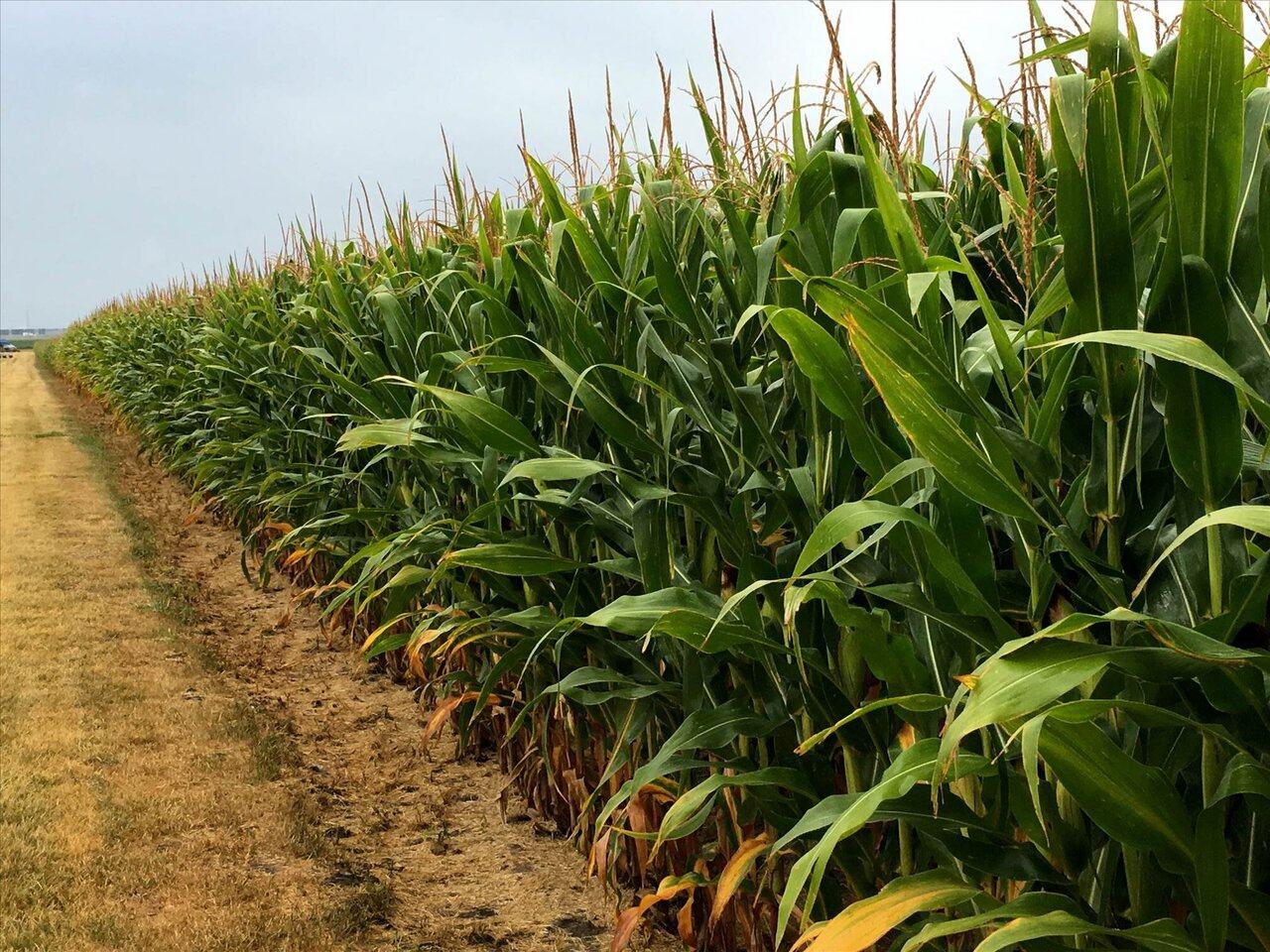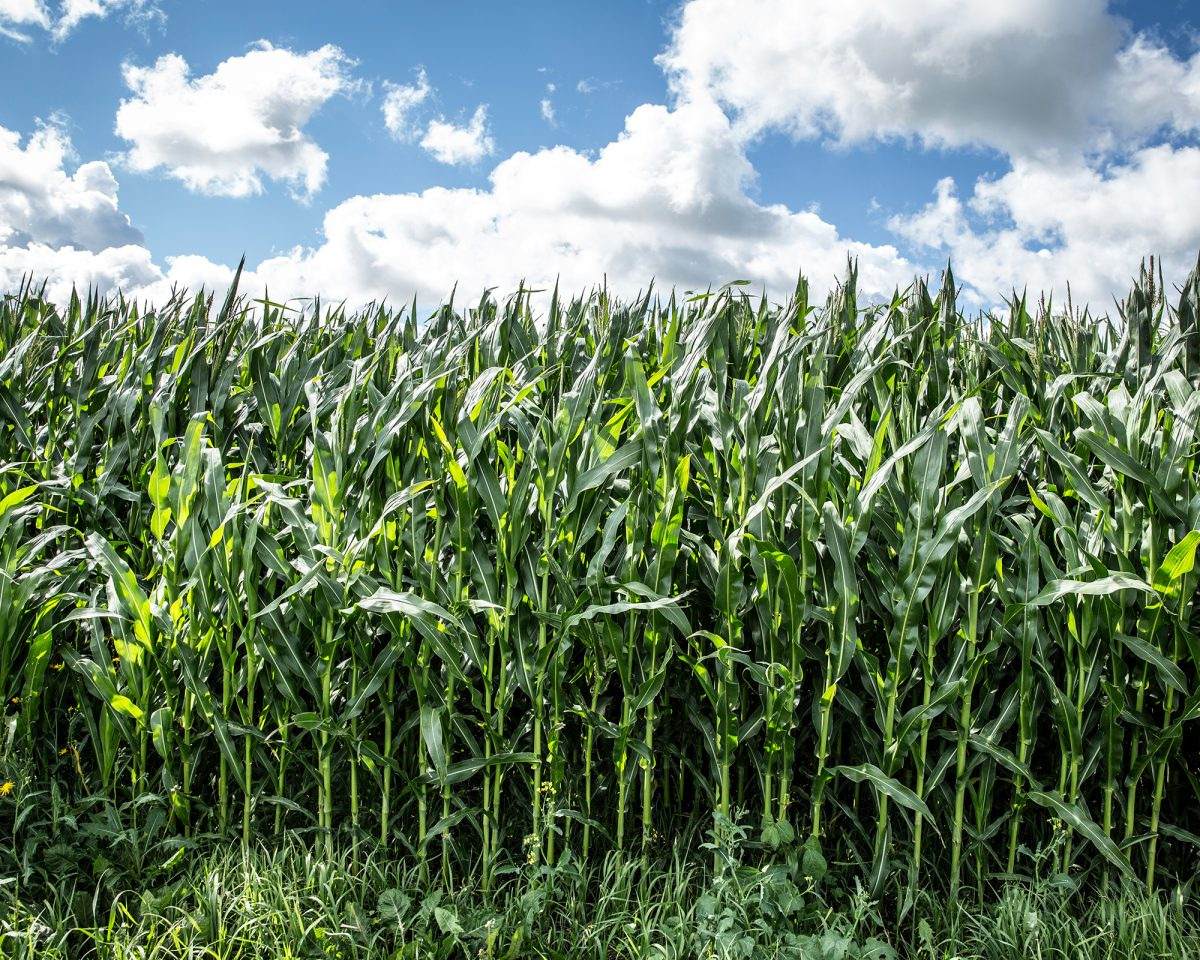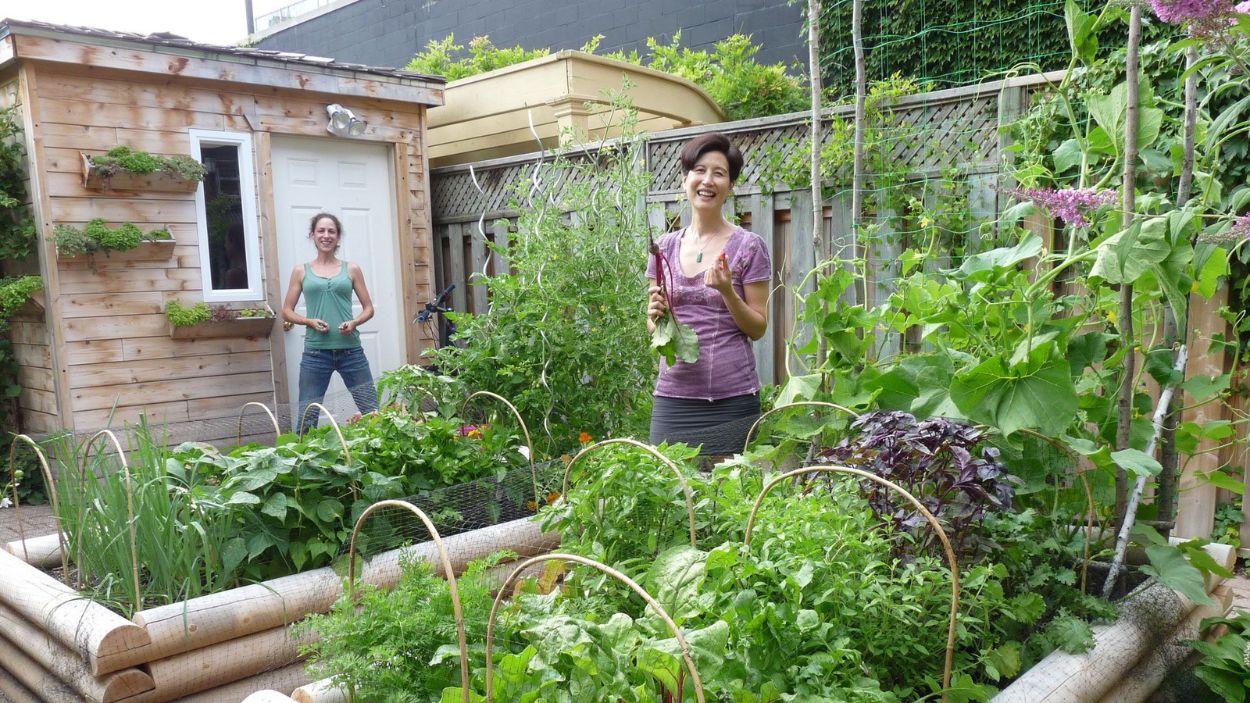Home>Garden Essentials>What Is Crop Rotation With Example?


Garden Essentials
What Is Crop Rotation With Example?
Modified: October 28, 2024
Discover the benefits of crop rotation in your garden with this comprehensive guide. Learn from real-life examples and boost your gardening success today!
(Many of the links in this article redirect to a specific reviewed product. Your purchase of these products through affiliate links helps to generate commission for Storables.com, at no extra cost. Learn more)
Introduction
Crop rotation is an essential practice in gardening and farming that involves the systematic alternating of different crops in a specific area over time. This agricultural technique has been used for centuries and is based on the principle that different plants have different nutrient requirements and interact with the soil in different ways. By rotating crops, gardeners and farmers can maintain soil fertility, control pests and diseases, and reduce reliance on synthetic fertilizers and pesticides.
In this article, we will explore the concept of crop rotation in depth, looking at its definition, the benefits it provides, and provide an example to help you better understand how it works.
Crop rotation is not a new concept, and it has been practiced by ancient civilizations such as the Romans and Greeks. However, with the rise of modern industrial agriculture, this practice has become less common. Nevertheless, it remains a valuable technique for sustainable and organic gardening and farming.
So why is crop rotation important? The main reason lies in the fact that different crops have different nutrient requirements, and growing the same crop in the same area year after year can deplete specific nutrients from the soil. This can result in poor plant growth, reduced yields, and increased vulnerability to pests and diseases.
Furthermore, monocropping, or growing the same crop continuously on the same plot of land, can lead to the buildup of pests and diseases that specifically target that crop. By implementing a crop rotation system, gardeners and farmers can disrupt the life cycle of pests and diseases, reducing their prevalence and impact.
Another benefit of crop rotation is its ability to improve soil structure and fertility. Different crops have different root structures, with some plants producing deep taproots and others having shallow fibrous roots. This diversity in root systems helps to break up compacted soil, improve water infiltration, and increase soil organic matter content.
Additionally, certain crops, known as nitrogen-fixing plants, have the ability to convert atmospheric nitrogen into a usable form for plants. Including these plants in the crop rotation cycle can increase soil nitrogen levels, reducing the need for synthetic fertilizers.
In the next section, we will delve deeper into the benefits of crop rotation and explore how this technique can transform your garden or farm into a thriving and sustainable ecosystem.
Key Takeaways:
- Crop rotation is like a balanced diet for the soil, helping it stay healthy and preventing pests and diseases. It’s like giving the land a spa day to keep it happy and productive!
- By switching up the crops, farmers and gardeners can keep the soil healthy, control pests, and increase crop yields. It’s like a natural way to make the garden thrive and grow lots of yummy veggies!
Read more: What Was Crop Rotation?
Definition of Crop Rotation
Crop rotation is a systematic method of growing different plant species in a specific sequence on a particular piece of land over a defined period. This practice involves dividing the land into several sections or beds and rotating different crops from one section to another each year or growing season.
The primary objective of crop rotation is to improve soil health and fertility by preventing nutrient depletion and reducing the build-up of pests and diseases. By alternating crops, gardeners and farmers can optimize the use of nutrients, minimize soil erosion, and promote a balanced ecosystem.
There are several types of crop rotation systems, including traditional or historical rotations, modern rotations, and organic rotations. Each system follows a unique sequence and selection of crops based on factors such as nutrient requirements, pest and disease management, and sustainability.
Traditional crop rotations have been practiced for centuries and typically include a cycle of staple crops such as wheat, corn, legumes, and fallow periods. These rotations were commonly used to restore soil fertility and control pests and diseases before the advent of chemical fertilizers and pesticides.
Modern crop rotations are often more diverse and complex, involving a wide range of crops, including cover crops and cash crops. The goal is to maximize productivity while minimizing environmental impacts. Modern rotations may also integrate conservation practices, such as no-till farming and precision agriculture, to further enhance sustainability.
Organic crop rotations, as the name suggests, are specifically designed for organic farming systems. These rotations focus on using natural soil amendments, avoiding synthetic chemicals, and regenerating soil health. Organic rotations often incorporate cover crops, green manures, and livestock integration to enhance nutrient cycling and pest control.
The specific crop rotation plan will vary depending on various factors, including climate, soil type, available resources, and the desired goals of the gardener or farmer. It is important to tailor the rotation to meet the specific needs of the plants and address potential challenges related to soil fertility, pest management, and sustainability.
Crop rotation can be implemented on both small and large scales. Home gardeners can practice simple rotation systems by shifting crops to different areas or beds each year. On the other hand, commercial farmers may develop more elaborate rotation plans that encompass multiple fields and incorporate various crops and management techniques.
Implementing an effective crop rotation system requires careful planning and monitoring to ensure proper nutrient balance, pest management, and overall success. By adopting this practice, gardeners and farmers can achieve healthier soil, improved crop yields, and sustainable agricultural practices.
Benefits of Crop Rotation
Crop rotation offers numerous benefits for gardeners and farmers alike. By diversifying the types of crops grown on a particular piece of land over time, this practice contributes to improved soil health, pest and disease management, and overall sustainability. Let’s explore some of the key benefits of crop rotation:
1. Soil Health and Fertility:
Crop rotation helps to maintain and enhance soil fertility by preventing nutrient depletion. Different crops have varying nutrient requirements, and rotating them allows for more balanced nutrient use. For example, legumes have the ability to fix atmospheric nitrogen, enriching the soil with this essential nutrient. Additionally, rotating crops with different root structures can improve soil structure, promote microbial activity, and increase organic matter content, leading to healthier and more productive soils.
2. Pest and Disease Management:
Crop rotation is an effective tool for managing pests and diseases. By growing different crops each season, gardeners and farmers can disrupt the life cycles of pest populations, reducing their abundance and minimizing the need for chemical pesticides. Additionally, certain crops have natural pest-repellent properties, which can act as a form of biological pest control. For example, marigolds are known to deter nematodes, while aromatic herbs like mint and basil can repel insects.
Read more: What Is Crop Rotation Strip Cropping
3. Weed Control:
Crop rotation can contribute to weed control by disrupting weed growth cycles. Different crops require different cultivation methods, timing, and spacing. By changing these factors between crop rotations, it becomes more challenging for weeds to establish and thrive. Additionally, incorporating cover crops in the rotation can suppress weed growth by providing competition for resources and shading the soil surface.
4. Environmental Sustainability:
Crop rotation plays a crucial role in sustainable agriculture. By reducing reliance on synthetic fertilizers and pesticides, it helps to minimize chemical inputs, which can have detrimental effects on the environment. The integration of cover crops in the rotation also helps to prevent soil erosion, improve water infiltration, and enhance biodiversity. Additionally, by promoting a healthier soil ecosystem, crop rotation contributes to more resilient and sustainable agricultural systems.
5. Increased Crop Yields:
Rotating crops can lead to increased crop yields over time. By providing a more favorable growing environment and breaking pest and disease cycles, crop rotation can optimize plant growth and productivity. Furthermore, improved soil health and fertility translate into better nutrient availability for plants, resulting in healthier and more abundant harvests.
6. Economic Benefits:
Crop rotation can have economic benefits for farmers. By reducing reliance on chemical inputs and improving soil health, farmers may save on fertilizers, pesticides, and other costly inputs. Additionally, improved crop yields can lead to higher marketable produce and increased profits.
Overall, crop rotation is a valuable practice that optimizes soil health, reduces pest and disease pressure, promotes sustainability, increases crop yields, and benefits the economy. By implementing a well-designed rotation plan, gardeners and farmers can create resilient and productive agricultural systems that are environmentally friendly and economically viable.
Read more: What Are The Principles Of Crop Rotation
Example of Crop Rotation
To illustrate the concept of crop rotation, let’s consider a simple example for a small vegetable garden. In this example, we’ll divide the garden into three sections and rotate three different types of crops: tomatoes, leafy greens, and legumes.
Year 1: Tomatoes
In the first year, we’ll plant tomatoes in the first section of the garden. Tomatoes are a nutrient-demanding crop, especially in terms of nitrogen. They also attract certain pests and diseases, such as nematodes and fungal pathogens. To prepare the soil, we’ll amend it with compost or well-rotted manure to improve its fertility. Throughout the growing season, we’ll monitor and manage any potential pest or disease issues through organic methods like companion planting and proper watering techniques.
Year 2: Leafy Greens
In the second year, we’ll move the crops to the next section and plant leafy greens such as lettuce, spinach, and kale. Leafy greens have lower nutrient demands compared to tomatoes, particularly nitrogen. They can also benefit from the residual nutrients left behind by the previous year’s tomatoes. Leafy greens are less prone to the pests and diseases that typically affect tomatoes, reducing the risk of recurring infestations. This rotation also helps in preventing nutrient depletion and provides a break for the soil from the specific pathogens that may affect tomatoes.
Year 3: Legumes
In the third year, we’ll plant legumes in the final section of the garden. Leguminous plants, like beans and peas, are capable of fixing atmospheric nitrogen through a symbiotic relationship with certain soil bacteria. This helps to replenish nitrogen levels naturally in the soil. Legumes also have deep-rooted systems that can improve soil structure by breaking up compacted soil layers. Additionally, legumes are less susceptible to diseases and pests that commonly affect tomatoes and leafy greens, allowing for a further break in pest and disease cycles.
Read more: What Was The Three-Crop Rotation?
Continuing the Rotation
After the third year, the cycle repeats, with tomatoes being planted in the first section again, followed by leafy greens in the second section, and legumes in the third section. This rotation pattern continues year after year, providing several benefits:
- Prevention of nutrient depletion: Each crop has unique nutrient requirements, and by rotating them, we ensure that the soil receives a balanced supply of essential nutrients.
- Control of pests and diseases: Crop rotation prevents the build-up of pests and diseases that target specific crops, reducing the need for chemical interventions.
- Improvement of soil structure: The diverse root systems of different crops contribute to better soil structure, water infiltration, and nutrient availability.
This example of crop rotation showcases how strategic planning and careful consideration of the specific needs of each crop can result in a sustainable and productive garden. By implementing a rotation system in your own garden, you can optimize nutrient usage, minimize pest and disease pressure, and create a thriving ecosystem.
Conclusion
Crop rotation is a valuable practice that holds immense benefits for gardeners and farmers of all scales. By systematically alternating different crops in a specific sequence, this technique helps to maintain soil health, control pests and diseases, and promote sustainability in agricultural systems.
We explored the definition of crop rotation, noting that it involves growing different crops in a specific order on a given piece of land. We discussed the benefits of crop rotation, including improved soil fertility, enhanced pest and disease management, weed control, environmental sustainability, increased crop yields, and economic advantages. These benefits underscore the importance of incorporating crop rotation into gardening and farming practices.
Moreover, we provided an example of how crop rotation can be implemented in a small vegetable garden. The rotation consisted of three crops – tomatoes, leafy greens, and legumes – handled in a specific order over a three-year cycle. This example demonstrated how crop rotation can prevent nutrient depletion, control pests and diseases, improve soil structure, and foster a balanced ecosystem in the garden.
In conclusion, crop rotation is a tried and tested agricultural technique that offers numerous advantages for both the soil and the plants that grow in it. By diversifying the crops, farmers and gardeners can cultivate healthier soils, reduce dependency on synthetic inputs, and contribute to sustainable farming practices. Whether you have a small backyard garden or a vast farm, implementing crop rotation can enhance your overall success and help create a thriving and resilient agricultural system.
Frequently Asked Questions about What Is Crop Rotation With Example?
Was this page helpful?
At Storables.com, we guarantee accurate and reliable information. Our content, validated by Expert Board Contributors, is crafted following stringent Editorial Policies. We're committed to providing you with well-researched, expert-backed insights for all your informational needs.













0 thoughts on “What Is Crop Rotation With Example?”